10 Underrated Songs Used In Popular Movies That Deserve More Praise
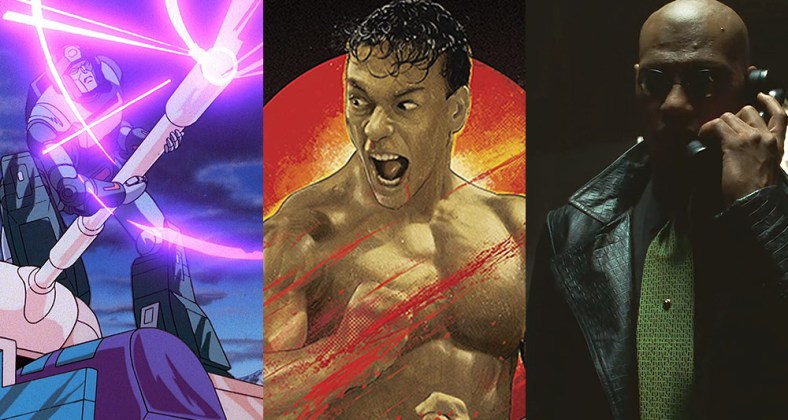
The use of music in movies is integral when it comes to creating a full-fledged cinematic experience, but the catch is whether they’re implemented correctly, or not. Oftentimes, directors will haphazardly integrate songs into the movie in an effort to trigger a response, not realizing that subtlety and timing both play key roles. Those who do it correctly manage to create phenomena that last forever.
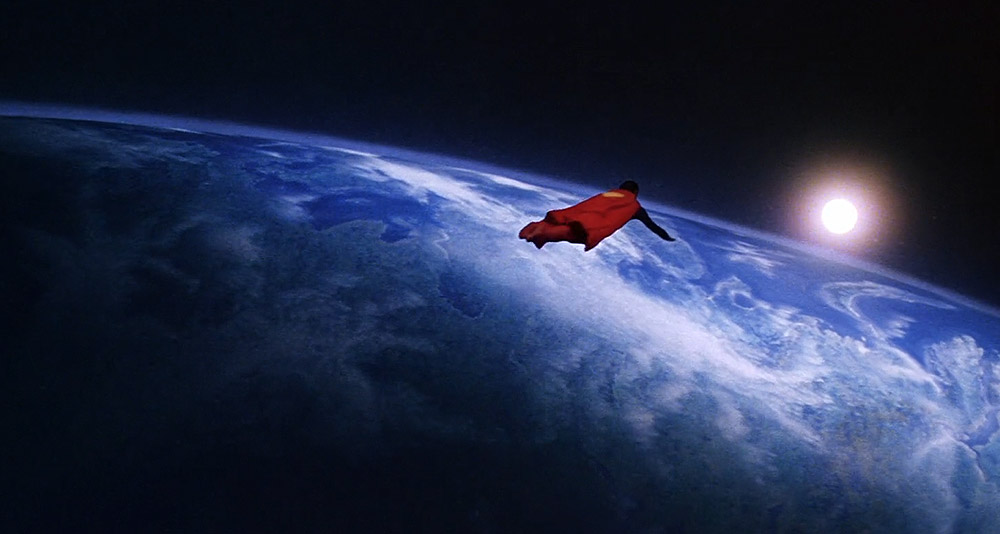
Superman soars over the planet Earth in the 1978 film by Warner Bros.
There are a bunch of films featuring songs that hit the mark in a big way and refused to let go, such as John Williams’ original score for 1978’s Superman. However, they don’t get as much attention or love as they should, in comparison to some of the greats. These are films which utilized music in a very clever and effective way to create a sense of energy and bond with the audience. It’s a skill that many directors need to learn how to harness correctly.
“PRIME AUDIO SOUP” / Meat Beat Manifesto (The Matrix, 1999)
The original Matrix film sported one hell of a soundtrack featuring some of the most prolific electronic music bands of the time. Popular acts like Lunatic Calm, Rob Dougan, The Propellerheads, Rage Against the Machine, and The Prodigy helped serve up a hyper-kinetic audio syrup to accompany the visual splendor and mind-blowing philosophy of the film. And then there’s “Prime Audio Soup” by Meat Beat Manifesto, which kicks off the scene where Morpheus and the gang take Neo to visit the Oracle for the first time.
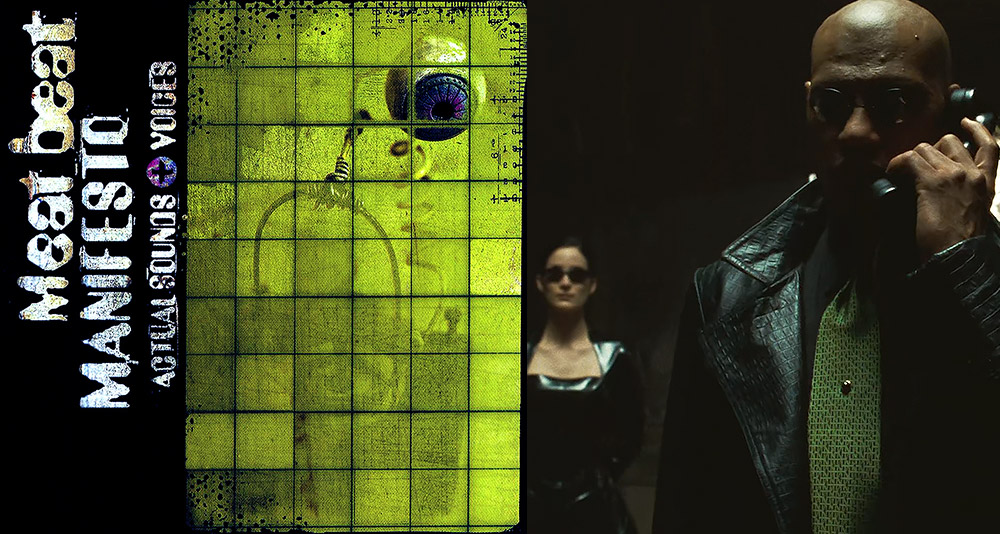
Meat Beat Manifesto’s ‘Actual Sounds + Voices’ album, and Morpheus from ‘The Matrix’ (1999), Warner Bros.
MBM has always been known for its distorted, warped and slightly terrifying take on the traditional breakbeat and industrial formulas, and here, it’s used to excellent effect. Thundering sub-bass and dirty drum work are flanked by piercing instrumentals while the Nebuchadnezzar crew jacks in, and the film cuts between the real world, and the machine world. There, a spinning black telephone keeps ringing in the background before the song’s funky bassline kicks in, showcasing them all in residual self-image. It’s cool, classy, and dare we say…sexy?
“THE LIVING DAYLIGHTS” / A-ha (The Living Daylights, 1987)
Following Roger Moore’s departure from the role of James Bond after 1985’s A View to a Kill, the torch was passed to actor Timothy Dalton to create an entirely new era. This new generation of Bond wouldn’t last long, but it did kick things off by surprising longtime fans with a cool and modern (at the time) take on the opening theme song, which for years had been dominated largely by smooth, jazzy numbers. One of the rare exceptions was the aforementioned A View to a Kill; the main theme composed and performed by Duran Duran.
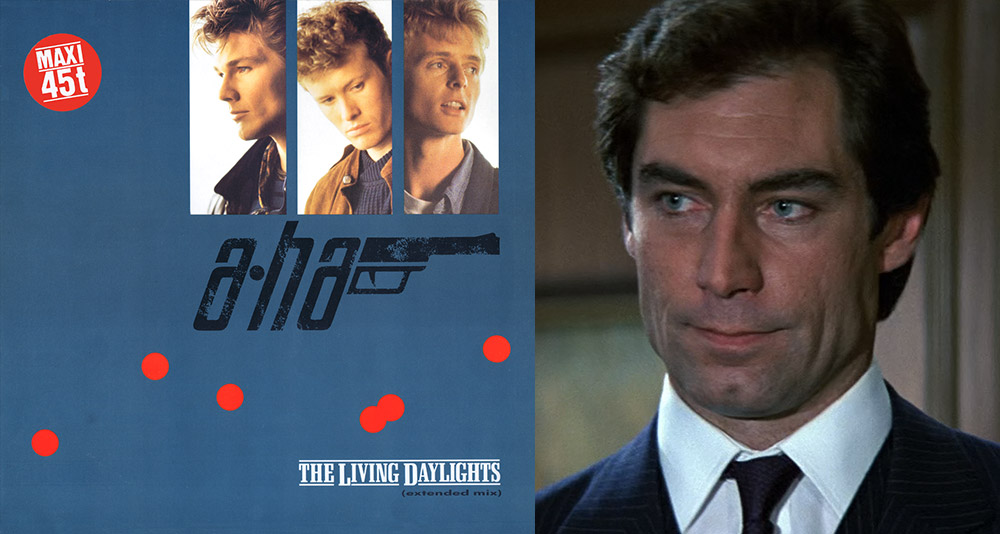
A-ha’s ‘The Living Daylights’ single, and Roger Moore from the 1987 MGM movie
At the time, Norwegian band A-ha was still quite a force in pop music, driven largely by the mammoth success of hits like “Take On Me” and “The Sun Always Shines on TV.” For The Living Daylights, the band worked with original Bond composer John Barry (not well, according to the band) to create a stirring and rousing opening theme song complete with traditional horns and other subtle musical cues that set the tone for the entire film. To date, it’s one of A-ha’s most popular songs, and one they played on the live scene for decades.
“DIVINITY II” / Nobuo Uematsu (Final Fantasy VII: Advent Children, 2005)
Though nearly impossible to follow for those who haven’t played the video game, Final Fantasy VII: Advent Children still remains one of the most praiseworthy cinematic “sequels” to a beloved franchise. It’s not perfect, but it does pay fan service in droves, and the amazing soundtrack is a major highlight. One of the film’s most exciting sequences involves a fight against the film’s antagonists, to the rousing heavy metal-infused “Sara ni Tatakau Monotachi,” but it’s only a table-setter for the ultimate moment.
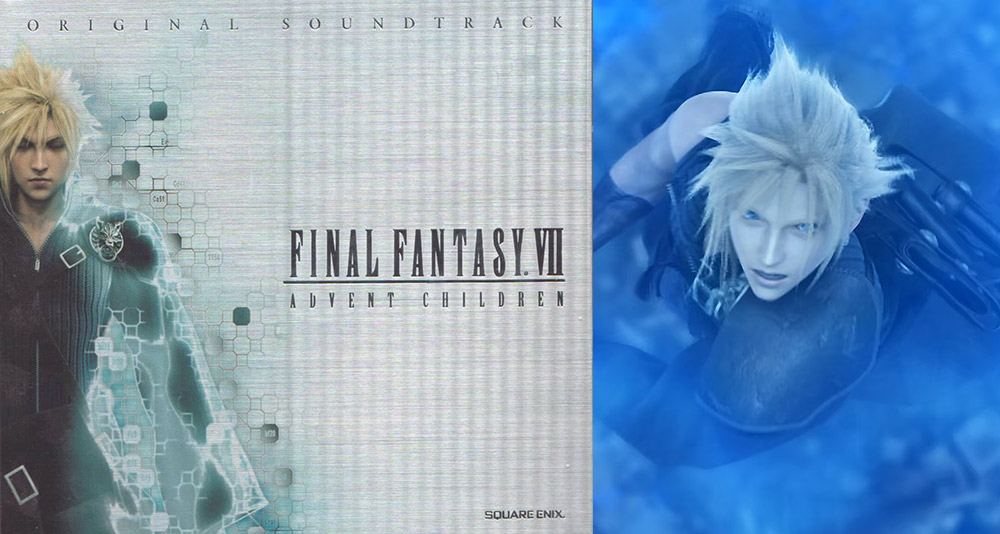
The ‘Final Fantasy VII: Advent Children’ soundtrack, and Cloud from the 2005 film, Square Enix
That occurs when the dreaded Bahamut SIN is summoned, and begins to wreak havoc on the citizens of Edge. The heavy metal is shelved in favor of an operatic classical song with a strong choir to push the heightened emotion of the scene. Cloud engages Bahamut SIN sword vs. tooth, forcing the creature to rise high into the air in preparation for a deadly strike against the city. Cloud leaps into the air to pursue the creature, aided by his friends who all give him a boost.

Aerith reaches out to Cloud in The ‘Final Fantasy VII: Advent Children’ (2005), Square Enix
The music continues to build as Bahamut SIN unleashes a massive energy blast, which Cloud penetrates straight through to hit his target. As he struggles to maintain his momentum, the scene suddenly stops, revealing the spirit of Aerith in Cloud’s vision. The song switches to incorporate her theme as she reaches out to take his hand, and asks “Ready?” Then, the song hits its massive climax, and Cloud leaps through the energy blast to slay Bahamut SIN in one of the franchise’s most emotional moments.
“NIGHTSTALKER” / Kenji Kawai (Ghost In The Shell, 1995)
Iconic Japanese composer Kenji Kawai was the perfect choice to score the original Ghost In The Shell anime film way back in 1995. The adaptation was far more serious and philosophical in tone compared to the original manga, and Kawai’s music capitalized on this bleak Blade Runner-style world to forge some of the most amazing music in the genre’s history.
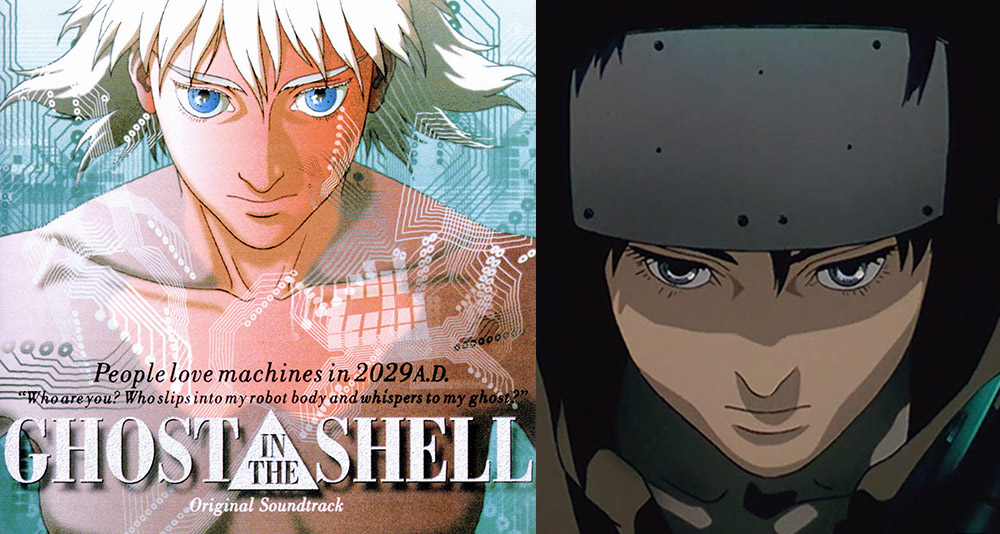
The soundtrack for ‘Ghost In The Shell,’ and Motoko Kusanagi from the 1995 anime film, Bandai Visual
A standout is “Nightstalker,” which prepares the audience for the final act where Kusanagi squares off against the individuals responsible for stealing the Puppet Master’s cyborg body. It’s an opportunity for a brief moment of respite and reflection that suits the deeply introspective nature of the film. The scene cuts between shots of the various characters who are all engaged in the same operation, mixed with the cold, calculating ruthlessness of a world that has traded humanity for the rigid effectiveness of technology.
“THE ATTACK” / Roger Waters & The Bleeding Heart Band (When The Wind Blows, 1986)
The British animated film When The Wind Blows, which touched on the horrors of a nuclear holocaust, also included one of the most eclectic and defiant soundtracks in memory. Musicians like David Bowie, Paul Hardcastle, and Hugh Cornwell contributed to the soundtrack, while the bulk of it was handled by Pink Floyd bassist and songwriter Roger Waters. One of the standout tracks of the entire film is “The Attack,” a dystopian hard rock anthem that plays out over animated scenes of devastation from the nuclear blast.
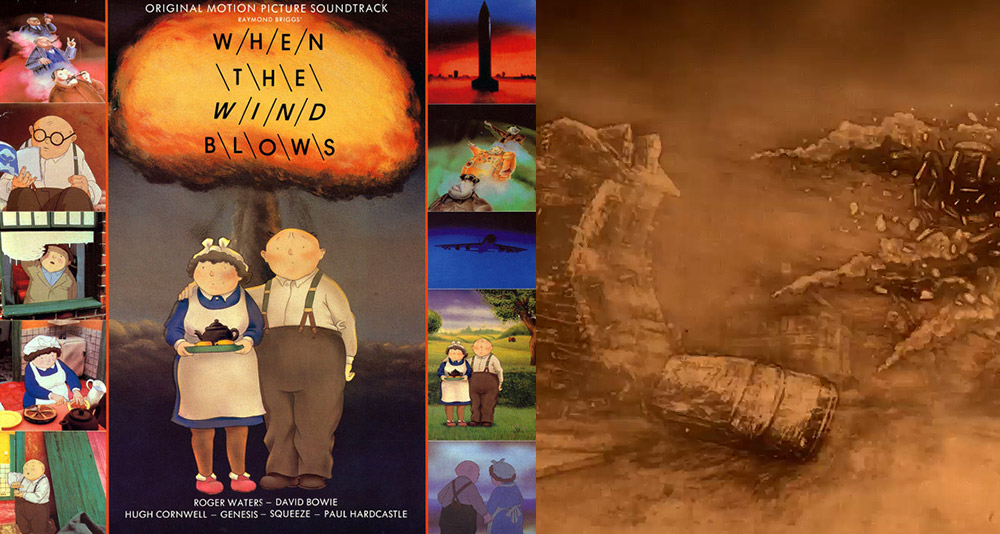
The soundtrack for ‘When The Wind Blows,’ and a scene of nuclear devastation from the 1986 film, Kings Road Entertainment
The scenes themselves are some of the most haunting of any nuclear disaster film, showing cars blown off the road, trains derailing off of bridges, and livestock being swept away by the blast. All the while, the song builds its terrifying off-key sound with strange voices wailing out in the background as the devastation races towards the ill-fated Bloggs household. Once there, the song switches to a beautiful and dreamy number played against scenes of Jim and Hilda’s young love and eventual wedding day, which is encapsulated in a picture shattered violently by a flying teacup.
“ZERO SIGNAL” / Fear Factory (Mortal Kombat, 1995)
Death/industrial metal band Fear Factory knows how to craft the perfect mix of industrialized sound and ear-shredding notes, and their 1995 album “Demanufacture” is one of their best works. It was so good that one of the songs even made it into the original 1995 Mortal Kombat film adaptation during a pivotal scene featuring Johnny Cage squaring off against the dreaded Scorpion.
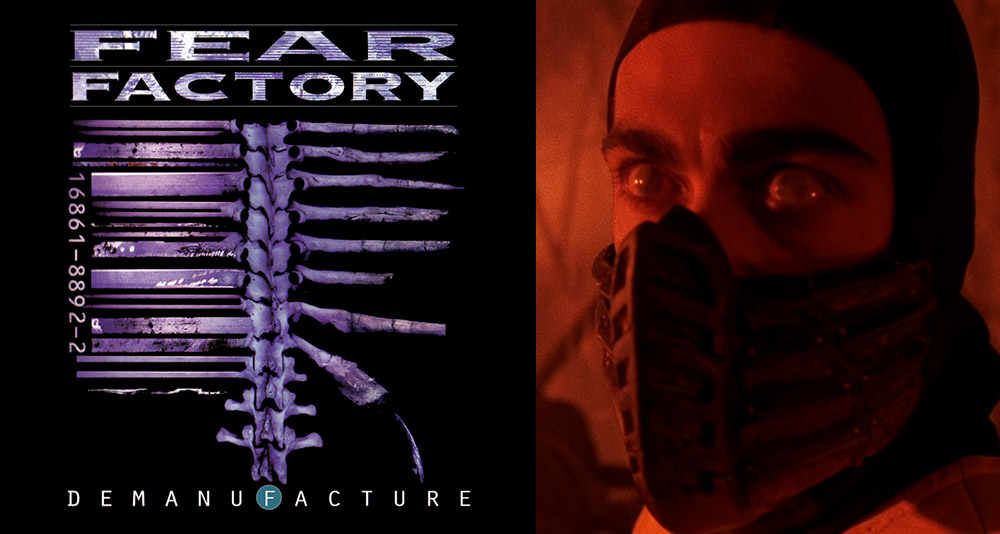
Fear Factory’s ‘Demanufacture’ album, and Scorpion from the 1995 Mortal Kombat film, New Line Cinema
The song kicks in after Scorpion sucks Cage through a portal that leads to his lair. There, the two engage in a brutal fight while Fear Factory’s “Zero Signal” plays in the background, cut precisely to accompany each change of the battle. While the edited song was the perfect accompaniment to that scene, the full-length version is even more fantastic, building to a surprisingly uplifting emotional climax.
“DARE” / Stan Bush (Transformers: The Movie, 1986)
Many fans remember “The Touch” as the defining song of the 1986 animated Transformers spinoff film, but there’s another gem on that soundtrack that deserves just as much praise. That song, of course, is “Dare,” also performed by Stan Bush, and featured in the opening and closing acts of the film. The song is first introduced when Hot Rod discovers the Decepticons infiltrating Autobot City’s airspace on a stolen shuttle, triggering a brutal battle between both sides.
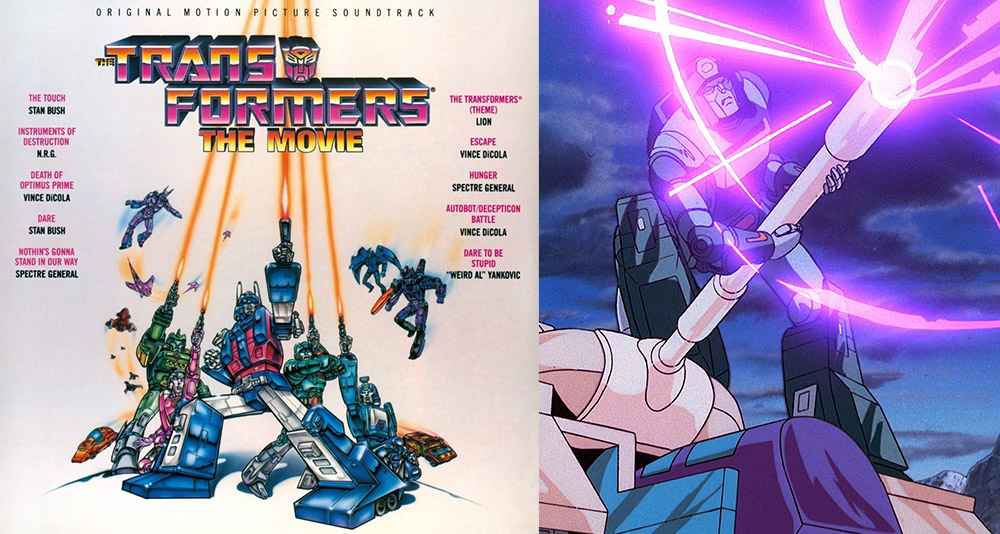
The ‘Transformers: The Movie’ soundtrack, and Kup battling Blitzwing in the 1986 film, De Laurentiis Entertainment Group
“Dare” is a sonic thrill ride of classic 1980s hard rock and metal, and has enough emotion to last three lifetimes. It’s uplifting, exciting, and incredible, especially when played against the backdrop of a massive battle between two robot factions. Meanwhile Vince DiCola’s electronic signature can be heard all over the track, further adding to the intricacy and power. It’s definitely one of the defining songs in 1980s cinema, even though it doesn’t get half the love that it should.
“PORCELAIN” / Moby (The Beach, 2000)
Say what you will about Moby, who has some of the dumbest and most radical political takes of any celebrity who doesn’t understand the subject, but he has cranked out some excellent tunes over the years. One of the highlights is the song “Porcelain,” used to superb effect in Danny Boyle’s underrated gem The Beach. The song is used to pad the idea of the wondrous utopia that characters Richard, Françoise, and Étienne stumble upon after following directions on a mysterious map.
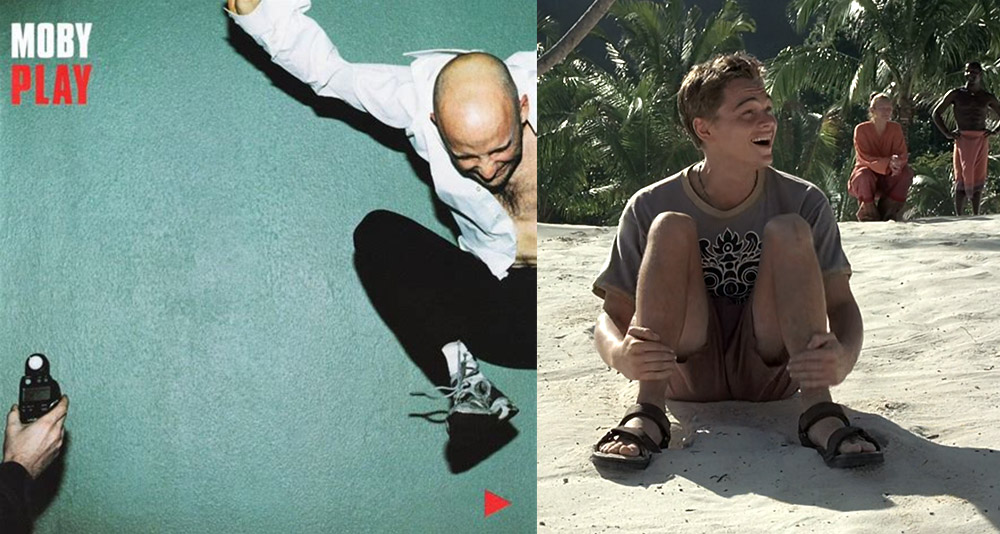
Moby’s ‘Go’ album, and Richard from Danny Boyle’s ‘The Beach’ (2000), 20th Century Fox
After introducing the audience to the idyllic society created by the island’s inhabitants, the scene shifts to the titular beach itself, a stunningly beautiful vista that has captivated fans of the film for over twenty years at this point. “Porcelain’s” hollowed synths, dreamy piano, and soothing vocals evoke everything that Richard and his friends feel when they discover this paradise. Unfortunately, it’s all an illusion soon to crumble when the ugly nature of humanity takes over.

Richard catches a fish in Danny Boyle’s ‘The Beach’ (2000), 20th Century Fox
However, in that brief moment, the audience comes to understand and appreciate the kind of society that the islanders tried to build. Boyle pushes this idea during the scene when Richard and Sal return to the mainland, and he sees the destructive, aimless hedonism of an irresponsible, selfish society wreaking havoc at every turn. All he wants to do is get back to the tranquility of the island, and the tightly-knit community of friends he has made. It’s a world we’d all like to escape to, if the bitterness of reality didn’t keep getting in the way.
“PROMENTORY” / Dougie MacLean & Trevor Jones (The Last Of The Mohicans, 1992)
Few period films are as interesting and riveting as The Last of the Mohicans, but a big part of the film’s success and continued allure is the dynamite soundtrack by composer Trevor Jones and Randy Edelman. This is a classical film with a classical soundtrack to match, and it fits the subject matter like a glove. However, the biggest standout track of the entire album is undoubtedly “Promentory,” which plays out in the final act of the film.
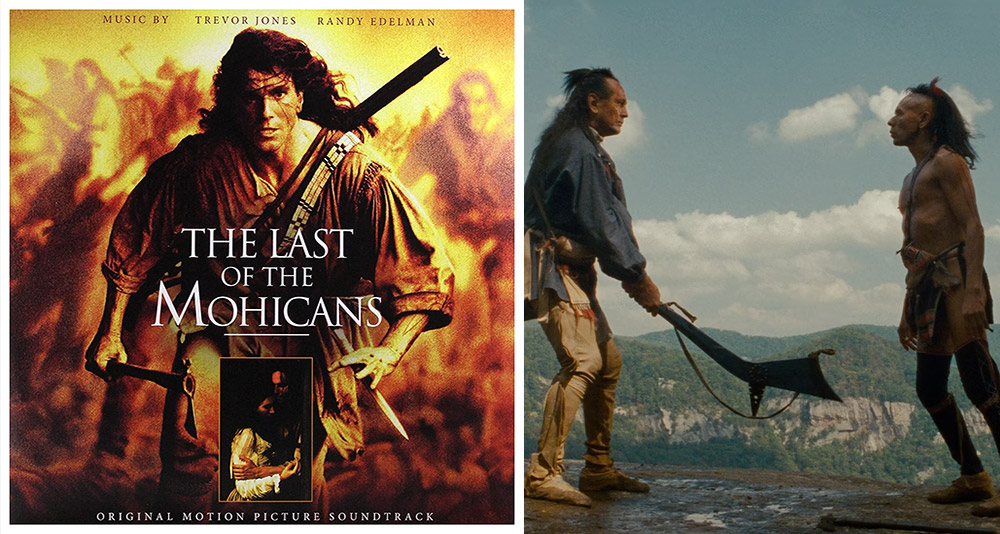
The soundtrack for ‘Last of the Mohicans’ (1992), and Chingachgook battling Magua in the final scene of the Warner Bros. movie
The sheer emotion of that entire scene is awe-inspiring, with several characters losing their lives, while others exact much-desired revenge. In the background is a swirling rendition of Scottish musician Dougie MacLean’s “The Gael,” which builds higher and higher throughout the scene until the final emotional climax. It’s one of the most picture-perfect marriages of music and film ever to have been cemented, and perhaps the scene most fondly remembered by fans of this epic classic.
“FINALE/POWDER/TRIUMPH” / Paul Hertzog (Bloodsport, 1988)
It may not have the most elegant name, and many fans may simply refer to it as the “Final Battle Theme,” but “Finale/Powder/Triumph” is a song that continues to resonate with diehard Bloodsport fans to this very day. And who’s to blame them, given the compositional brilliance of musician Paul Hertzog? With synthesizers in tow, the man crafted one of the most dreamy and inventive soundtracks for an action film.
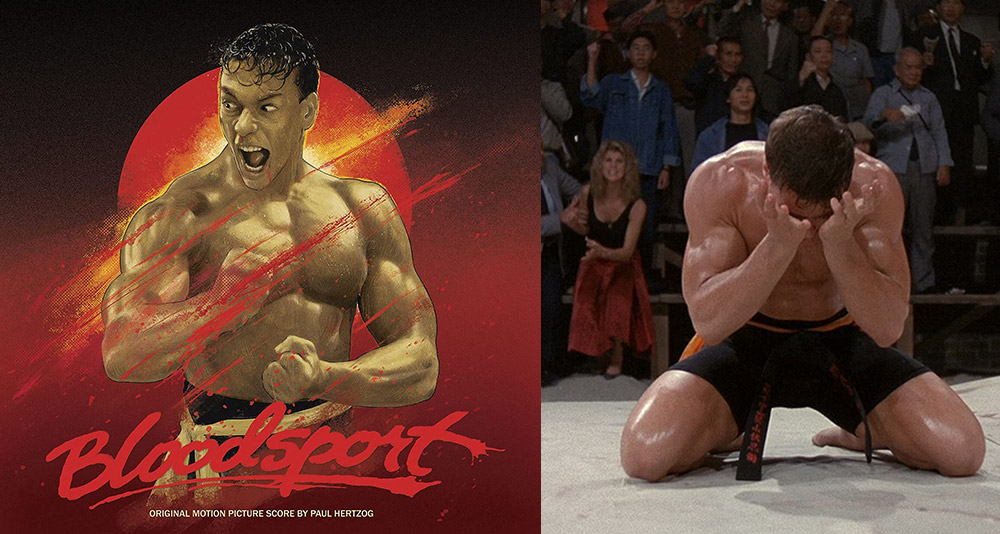
The soundtrack for ‘Bloodsport,’ and Frank Dux in the 1988 film by Cannon Films
The song is a 7 minute and 28 second-long emotional rollercoaster which drags the viewer through Frank Dux’s battle with the terrifying Chong Li. It starts off on a high note, before the latter tosses a ground-up salt pill in Dux’s face, impairing his vision. From there, the song goes down a terrifying sonic rabbit hole, and it seems like all is lost. When Dux learns to control his anger and focus on the training bestowed upon him by his beloved Shidoshi, the song becomes a linchpin for one of the most emotional parts of the movie, perfectly capturing the intensity of the moment.
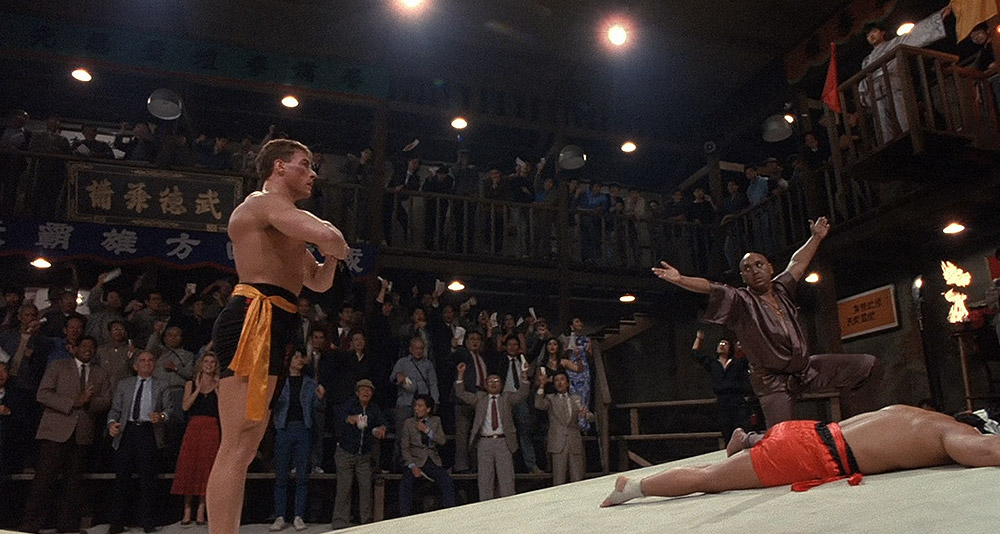
Frank Dux wins the kumite in ‘Bloodsport’ (1988), Cannon Films
The film’s editors wisely cut the slow-motion footage to match up with Dux’s newfound confidence, just as the song builds up to a brilliant pinnacle. Then, the final act begins! Dux turns the tables on Chong Li and obliterates him. As he racks up hit after hit, the crowd goes wild, and the song continues to build higher and higher until the final knockout. It’s this kind of marriage between music and film that made classic 1980s action hits so memorable. It’s also a testament to the triumph of the human spirit.
NEXT: 10 Popular Movie Franchises That Wrote Themselves Into Oblivion
More About:Movies
